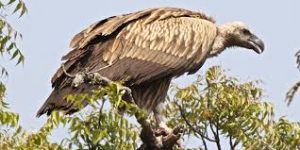Our Blog
Home / Blog
Wildlife Conservation: A General View

India, a land of diverse ecosystems and rich biodiversity, has long been a sanctuary for a myriad of wildlife species. From the majestic Bengal tiger to the elusive snow leopard, the country’s wildlife plays a crucial role in maintaining ecological balance. However, rapid urbanization, habitat loss, and poaching pose significant threats to this natural heritage. In response, concerted efforts in wildlife conservation have gained momentum across the nation.
1. Rich Biodiversity: India’s diverse topography, ranging from the Himalayan peaks to the coastal plains, fosters a remarkable variety of flora and fauna. The country is home to around 7-8% of the world’s recorded species, making wildlife conservation a matter of global significance.
2. Flagship Species: The Bengal tiger, Indian elephant, Indian rhinoceros, and Asiatic lion are considered flagship species, drawing attention to the need for conservation. National parks and wildlife sanctuaries have been established to provide protected spaces for these iconic animals.
3. Protected Areas: India boasts an extensive network of protected areas, including over 500 wildlife sanctuaries and 100 national parks. These areas serve as havens for various species, fostering breeding, nurturing habitats, and supporting scientific research.
4. Conservation Initiatives: Government bodies, environmental organizations, and local communities actively engage in wildlife conservation initiatives. Projects like ‘Project Tiger’ and ‘Project Elephant’ focus on the conservation of these keystone species and their habitats.
5. Community Involvement: Recognizing the integral role of local communities, many conservation projects now emphasize community-based conservation. Involving communities in decision-making processes not only benefits wildlife but also promotes sustainable development.
6. Challenges and Threats: Despite these efforts, challenges persist. Human-wildlife conflict, poaching, and illegal trade in wildlife remain significant threats. Climate change further exacerbates these challenges, affecting habitats and migration patterns.
7. Global Collaboration: Wildlife conservation in India is not a solitary endeavor. Collaborative efforts with international organizations, NGOs, and neighboring countries play a vital role in addressing transboundary conservation issues.
8. Education and Awareness: Educating the public about the importance of wildlife conservation is paramount. Awareness campaigns, school programs, and eco-tourism initiatives contribute to building a sense of responsibility towards our natural heritage.
9. Future Outlook: As India marches towards sustainable development, balancing the needs of a growing population with wildlife conservation is crucial. Implementing innovative conservation strategies, harnessing technology, and fostering international cooperation will shape the future of wildlife conservation in India.
In the grand tapestry of India’s wildlife, every species, from the smallest amphibian to the mightiest mammal, plays a unique role. Preserving this diversity is not just an environmental necessity but a testament to our commitment to future generations and the planet we call home.









